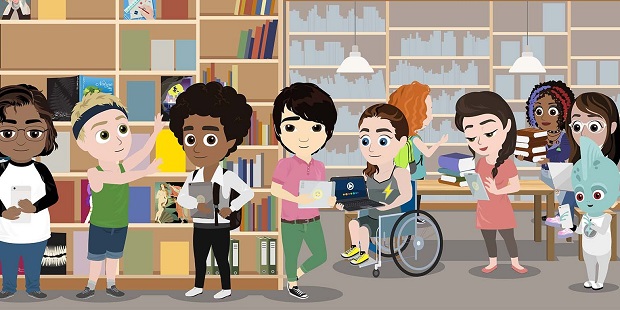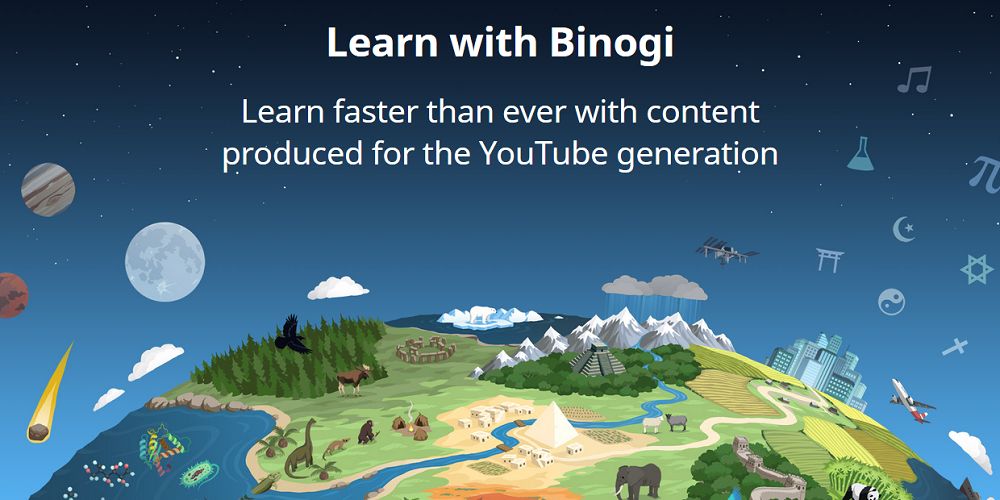Below is our recent interview with Gary Stairs, from Binogi.ca:
Q: What’s the latest development & news from your company, Binogi.ca?
A: Due to the outbreak of the novel Coronavirus, this week, Binogi opened up its content to all Canadian teachers, students, and parents to provide remote teaching and learning throughout spring 2020. In Sweden, Binogi provides close to 1,000 animated videos and quizzes in 11 subjects, developed for students in Grades 4 – 9. Today, over 200,000 students in Sweden have access to this online learning platform. “This is a unique situation where everybody in society needs to contribute. Our employees suggested we should open up access to our platform for everyone, we thought this is a great idea and we hope it helps in some small way” says Linus Gunnarson, CEO of Binogi.
Binogi is an entirely unique multilingual platform that particularly supports math and science curriculum for Canadian students in Grades 6 – 9, with more subjects in the works. The lessons are currently available in Swedish, English, Arabic, Tigrinya, Dari, Somali, Finnish, and German (and an international French pilot is now underway). As of today, anyone who opens an account will get full access to all videos and quizzes during the spring 2020 term. Once the term is over, the accounts will have limited access to these videos and the quizzes. The number of children, youth and adults not attending schools or universities because of COVID-19 is soaring.
Q: What is the overall problem that Binogi is helping to solve, attracting the interest of the Canadian Commission for UNESCO and several education departments in eastern Canada?
A: Governments all around the world have closed educational institutions in an attempt to contain the global pandemic (link is external). According to UNESCO monitoring, over 156 countries have implemented nationwide closures, impacting over 82.5% of the world’s student population. Several other countries have implemented localized school closures and, should these closures become nationwide, millions of additional learners will experience education disruption. The current closure data globally is 1,418,764,116 affected school-enrolled learners.
Thus, our company, Binogi in partnership with its European colleagues, wishes to help Canada’s educators as they work to minimize the educational disruption and facilitate the continuity of learning, especially for the most vulnerable. Accordingly our multi-lingual content will be free for the remainder of the school year, per our attached news releases on the Canada Newswire service.
Q: Tell me more about Binogi – how and where did your company get its start?
A: Binogi was started 2011 in Sweden by two newly-graduated high school students and a serial entrepreneur/investor. During their last years of high school, the founders used Youtube to find videos that could explain things in an easier and more engaging way than their teachers or their textbooks could. Once out of school they realised that the videos on Youtube could be done more professionally and cover all subjects, and together with the serial entrepreneur they came up with the vision to record all lessons in all eleven theoretical subjects for grade 7-9. This would make learning more fun, engage students more and above all, improve their results so that more students would get admitted to high school.
Q: How did the invention of this educational resource occur, at the outset?
A: First the founders recruited teachers, put them in front of a whiteboard, hit record on the video camera, and that’s it! After the first few lessons were recorded, they started to invite students to their offices on a continuous basis. Binogi showed the lessons they produced to the students, but instead of watching the videos together with the students, they turned their backs to the screen to get some user feedback, watching the students instead. How did they react, where did their eyes go? These students, aged 14-16, were readily observed when they got bored. So Binogi started to tweak the video with the goal that students should be able to view a full 3-5 minute video without losing attention, since it is very difficult to regain this. This was corroborated by their research.
Over time the production moved away from filming teachers in front of white boards, to fully-animated videos with professional teams of script writers, directors, animators, voice actors and the production team grew quickly.
Q: I understand that Binogi had international success, early on, with helping Syrian
refugees – can you tell me a little more how that happened?
A: Once the Syrian war heated up, Sweden became a significant host to refugees. Binogi thus sought to have the whole secondary school curriculum on film and, at least, dub it in Arabic thinking this would not be hard. So they, proceeded and quickly came to realize that it was really hard, and truly cost them a lot of money. Consequently, Binogi got financing from the Swedish Innovation Authority, VINNOVA, to do a small pilot, translating chemistry, biology and physics into Arabic and testing it on up to 3,000 students in 20 schools across Sweden for 3 months.
After 3 months, the Binogi team got some great feedback. Students were able to learn school content directly without having to go through the cumbersome process of first learning Swedish. Their parents could now support these students at home and subject content was shared regardless of language: all were “part of the class.” So Binogi decided to start a larger project where researchers, school boards and infrastructure companies (such as IBM) were invited to participate in a larger project that they called “the language project.” And coincidentally, what Binogi enabled with this innovation was something that Canadian professor Dr. Jim Cummins of the Ontario Institute for Studies in Education (OISE) at the University of Toronto and other linguistic researchers have advocated all along: that students should keep and strengthen their first language in order to improve their overall learning in school. Cummins notes “Binogi is a unique learning resource that literally brings the curriculum home to students and parents.”
 Recommended: An Interview With Justin Matoesian The Founder Of TerraVita CBD
Recommended: An Interview With Justin Matoesian The Founder Of TerraVita CBD
Q: In practice, how did that initial Arabic production actually work?
A: When Binogi started to translate, they recruited Arabic speaking translators within Sweden. However, they soon realized was that these translators had lived in Sweden for more than 5 years and did not speak a contemporary Arabic. Instead, they spoke “old Arabic” and the school students were very reluctant to use these words. So Binogi needed to translate their lessons in the country of origin, recognizing that these translators did not actually know the educational curriculum of Sweden and Canada, for example. So, now Binogi engages proofreaders for everything in each target country and then records the video in the country of origin again. This flow of production is now done in these 5 countries and 8 languages. For each country Binogi adds, they can create more content and translate to more languages.
Q: So, for our international readers, what’s the story in Canada – why here, why now?
A: As we said previously, Binogi now engages proofreaders and translators and voice actors in each country in which they operate. Once the localization process is complete, the new language can be added to the platform. This process has been performed in 5 countries and 12 languages. For each new country that Binogi enters, they create more content and translate to more languages.
Thus, in early 2018 Binogi launched its first efforts in Canada and began a pilot project with several classes at the Toronto Catholic District School Board (TCDSB). In addition to this pilot, Binogi has partnered with researchers at OISE to ensure constant improvement. Following this success, Binogi opened its first production facility in Halifax, NS in September of 2019. This new facility is intended to drive innovation and to better help the students, teachers, and school districts/boards of Canada. As well, as noted above, Binogi received word this week that an international, French pilot project with 650 post-graduate education students has been funded, in partnership with OISE, several other Canadian universities and one in Montpelier, France.
Activate Social Media:


 Recommended:
Recommended: 